More than 110,000 images are currently accessible on the ICRC’s audiovisual archives portal. The photographic collection, built up over the years and constantly enriched by new acquisitions, documents the ICRC’s activities and helps to preserve and promote its institutional memory. It contains a multitude of photographic media (paper prints, negatives and slides) that bear witness to the evolution of the medium and the considerable role it has played for the institution as a communication and heritage tool.
Following a digitisation project that took place between 2005 and 2008, almost all of the documents have been described. However, several thousand slides and negatives, although digitised, have not yet been described – due to lack of time – and have therefore never been published on the online portal mentioned above.
✣
The processes of description and indexing help to structure the photographic archive. This involves collecting and transcribing a series of metadata including: the date of production, the photographer, the keywords, captions and the geographical location. They provide essential information that complements the visual elements. For this reason, photographs that have not been described and indexed remain “in quarantine” and cannot be published on the portal.
This is where the practice of “retro-cataloguing” comes into play, which entails the description and indexing of the photographs in quarantine.
The aim of this publication is to give as many people as possible access to these photographic acquisitions which help to document 160 years of the ICRC’s history.
Starting in 2023, and following a ten-year pattern, the years 1993, 1983 and 1973 will be the first to be covered in this exploration of the ICRC’s humanitarian action through its photographic holdings. In this way, many photographs will gradually be brought out of their quarantine and made accessible to the general public.
N.B. The contextual information for the images is taken from the ICRC Annual Reports, which can be consulted via the ICRC’s library catalogue.
𑁋 THE ICRC IN THE 1990’S 𑁋
THE YEAR 1993 (see the ICRC’s annual report from 1993)
Click here to see all the photographs from 1993
MOZAMBIQUE
The signing of a general peace agreement in October 1992 brought an end to the 16 years of internal armed conflict and bloodshed that had all but destroyed the very fabric of the Mozambican nation. […] many refugees returned to Mozambique, harvests were plentiful in a number of regions previously crippled by drought, and the constant terror pervading the country subsided. Alongside these positive developments, the demobilization of the army and RENAMO and the formation of a new national defence force did not come to pass as foreseen, and elections planned for October 1993 were put off for another year. The removal of landmines strewn over the countryside made only slow progress. […] Against this general background the ICRC went ahead with its plans to reduce its relief programme and to concentrate on medical activities, tracing and the dissemination of international humanitarian law. (pp. 60-61)
Orthopaedic activities
After three years of training, the ICRC’s course for orthopaedic technicians in Beira came to an end in March. Of the initial 38 trainees, 23 successfully completed the course and passed their final examinations […] they were subsequently integrated as technicians in the ICRC’s orthopaedic centres in Beira, Maputo, Nampula and Quelimane. The ultimate aim is for them to take over as the ICRC winds down its involvement. In the meantime, the production of prostheses, orthoses, wheelchairs and crutches, and repairs to orthopaedic devices continued as usual throughout the year. In all, 917 prostheses were manufactured and 377 new patients fitted with these devices. As regards orthoses, 106 were made and 84 patients fitted. In addition, 2,011 pairs of crutches were manufactured. (p. 63)
Beira. Limb-fitting rehabilitation center managed by the ICRC and the Mozambique Red Cross Society. 1993. ©ICRC / GAGNEAUX, Luc. V-P-MZ-D-00072-12
In 1993, the ICRC fitted 461 war amputees with orthopaedic devices.TAJIKISTAN
By the beginning of 1993 the armed conflict which had broken out in Tajikistan in early May 1992 had driven some 500,000 people (about 10% of the population) from their homes […]. At the outset, the fighting had been viewed as an internal armed conflict between pro-Communists and an Islamic-democratic alliance – with some underlying clan pressure. Later it was observed that ideological considerations were far less important than regional identity based on political and economic interests and historical roots. […] After fighting flared up in the region in May, the ICRC carried out a survey of the situation and a delegate was based in Khorog from July until mid-November. Assistance for the local population was provided by various non-governmental organizations. (p. 175)
Activities for the civilian population
As the only humanitarian organization operational in Tajikistan until February, the ICRC closely monitored the needs of the displaced people and returnees. Delegates focused their efforts on regions most affected by the fighting: in the capital, in the Garni valley and in the Khatlon oblast. Vital emergency distributions of blankets, clothing, plastic sheeting, family parcels and bulk food were carried out. In Dushanbe and Kurgan Tyube there was particularly close collaboration with the Red Crescent Society of Tajikistan. Some 70,000 people benefited from ICRC relief supplies before the situation improved during the second half of the year. In the Garni valley, where there were an estimated 45,000 displaced people, food stocks dipped very low when supplies from Dushanbe were cut off by the fighting. When the Garni valley was retaken by government forces at the end of February the ICRC was able to bring in two aid convoys. The only route into the area was through a treacherous mountain pass from Kyrgyzstan. Later, it was possible to transport relief supplies by road directly from Dushanbe (p. 176)
Garm Valley, Komsomolabad. Displaced persons receive relief supplies from the ICRC (blankets). 14/03/1993. ©ICRC / STOOP, Laurent. V-P-TJ-N-00026-22
In 1993, the ICRC distributed more than 2,900 tonnes of relief supplies to some 312,000 people affected by the conflict.EX-YUGOSLAVIA (Bosnia-Herzegovina / Croatia)
Throughout 1993 the ICRC’s relief programme in the former Yugoslavia remained its second largest operation and the biggest in terms of non-food assistance. (p. 25) […] The conflict in Bosnia-Herzegovina continued unabated in 1993, claiming a high number of mostly civilian victims. Conditions became increasingly difficult as the battle for territory intensified; central Bosnia was the most severely affected. […] Serbs controlled the bulk of the territory, mostly in the north and the east, and Bosnian Croats claimed areas bordering the Republic of Croatia in the south-west, leaving the Bosnian government in control of parts of central Bosnia and towns in small enclaves. (pp. 145-146) […] In addition to coordinating ICRC activities in Croatia the delegation in Zagreb and the sub-delegation in Split also served as logistics bases and provided support for the institution’s operation in Bosnia-Herzegovina. (p. 153)
Activities for the civilian population
ICRC target groups for relief distributions included displaced people, the elderly and the disabled, as well as people in social welfare institutions and hospitals. Each month an estimated 500,000 people received parcels containing supplementary foodstuffs such as beans, cheese, vegetable oil and sugar as well as certain non-food items such as soap. As the cold weather set in and the needs of the civilian population increased, the ICRC carried out a winter relief programme to meet the needs of people in besieged towns and in central Bosnia. The non-food items included warm clothing, blankets, footwear and about 29,000 wood-burning stoves. (p. 150)
The ICRC facilitates the transfer of prisoners, women, and children from Vitez to Zenica. 1993. ©ICRC / FERIC, Ana. V-P-YU-D-00020-11
In 1993, the ICRC distributed relief supplies to around one million people affected by the fighting.
THE YEAR 1994 (see the ICRC’s annual report from 1994)
Click here to see all the photographs from 1994
RWANDA
The ICRC’s humanitarian activities in Rwanda in 1994 can be divided into two distinct periods: the first three months and the rest of the year. At the beginning of 1994 a great deal of turmoil was observed in political spheres, as the implementation of the Arusha Peace Agreement was running up against delays and resistance. Tension prevailed, punctuated by political assassinations. […] It came as a major shock to the international community when, on 6 April, the President was killed in a plane crash1 and a horrifying wave of massacres subsequently swept the country, wiping out hundreds of thousands of civilians. Armed militia groups led by extremist politicians systematically set about eliminating anyone who did not support their cause, principally people of the Tutsi ethnic minority, but also moderate Hutus. […] The ICRC’s immediate decision was to stay on and set up emergency surgical care for the survivors of the massacres, while most other expatriates fled the country. As they were located in the heart of the combat zone, the ICRC’s delegation and hospital in Kigali came under shellfire on several occasions and a number of patients and staff were killed. […] The ICRC responded to the new needs, deploying logistic and budgetary resources on a scale that made the Rwanda operation its largest relief operation worldwide in 1994. (pp. 53-54)
Water and sanitation
From the outset, the aims of the ICRC’s water and sanitation programme in Rwanda were twofold: first, to curb the outbreak of disease in the camps for the displaced, and secondly, to rehabilitate the country’s main water-treatment plants. […] In south-western Rwanda the first task was to complete a 4.5 km gravity system supplying water to Nyarushishi camp (10,000 displaced people). This was followed by continuous surveys to monitor the situation in other camps between Cyangugu and Gikongoro. After the departure of the French army, ICRC engineers carried out water and sanitation work in five camps south of Gikongoro accommodating about 65,000 displaced people. The population of the camps were urged to observe the basic rules of hygiene to help reduce the spread of disease. (p. 60)
In 1994, the ICRC provided 2,000,000 Swiss francs worth of equipment for water and sanitation work.SRI LANKA
The year brought major political change to Sri Lanka. After 17 years in power the United National Party lost the parliamentary elections on 16 August. The leader of the victorious People’s Alliance coalition went on to win the presidential elections in November. The new government pledged to find a settlement for the internal armed conflict and expressed its willingness to hold talks with representatives of the LTTE. […] During the year the situation in Sri Lanka was characterized by low-level fighting between the army and the LTTE in the north. Fishermen belonging to Sinhalese and Tamil communities were often the victims of these clashes. The east was relatively calm except for some attacks and ambushes reported during the second half of the year. (pp. 111-112)
Dissemination
The ICRC continued its efforts to promote understanding of and respect for international humanitarian law among the field units of the armed forces, the police and the LTTE. To this end, an instruction manual entitled Train your men to respect the law of war was produced in English, Sinhalese and Tamil. This was given to over 600 military instructors and LTTE representatives and was accompanied by short lectures, case studies and practical exercises. The manual was compiled with the cooperation and advice of the Sri Lankan military and police instructors. In addition, 15,000 booklets on the law of war for soldiers were printed in Sinhalese and Tamil and distributed to members of the armed forces and the LTTE. Seminars on international humanitarian law were also organized for National Society staff and the general public. (pp. 114-115)
Jaffna. Dissemination of international humanitarian law and Red Cross principles to LTTE fighters. 1994. ©GLMR ET SAGA / BOUVET, Eric. V-P-LK-D-00018-10
In 1994, the ICRC carried out dissemination activities with more than 2,400 members of the armed forces.PERU
The advances made in 1994 and in previous years by government forces reduced the overall intensity of the fighting and led to the arrest of thousands of people accused of belonging to or supporting the two armed opposition groups. By the end of the year calm had returned to large portions of Peruvian territory, and in response the ICRC decided to scale down its presence in certain regions. Nonetheless, in 1994 there were still many violent incidents in the upper Huallaga valley and the Ucayali region, as well as in the jungle region of Junin department. The ICRC maintained its presence in these regions, as in others, throughout the year. (p. 206)
Activities for the civilian population
The ICRC provided material assistance (food, blankets, clothing, tools and kitchen utensils) to over 4,430 civilians (about 900 families) directly affected by the internal violence, including widows, orphans and displaced people. In addition, the delegation supported a school canteen which provided one hot meal daily to 350 orphans or children from displaced families in Ayacucho. A total of 54 tonnes of relief supplies were distributed. (p. 208)
Ayacucho, ICRC’s canteen “comedor”. Meal distribution to children. ©ICRC / HIPPENMEYER, Marie-Eve. V-P-PE-N-00015-36
In 1994, the ICRC distributed 54 tonnes of relief supplies.
𑁋 THE ICRC IN THE 1980’S 𑁋
THE YEAR 1983 (see the ICRC’s annual report from 1983)
Click here to see all the photographs from 1983
PAKISTAN
In 1983, the ICRC delegation in Pakistan continued its assistance, chiefly medical, for victims of the Afghan conflict. During the second half of the year, a sub-delegation, administered by the Peshawar delegation, and a new surgical hospital were set up in Quetta, in the province of Baluchistan. The delegation was also in regular contact with the representatives of various Afghan opposition movements concerning the prisoners they held. These matters were again taken up by the ICRC delegate-general for Asia and Oceania during his visit to Pakistan in September. […]. At the end of the year, the Peshawar delegation and the Quetta sub-delegation comprised a total of 439 persons, including 404 employees recruited locally. (p. 40)
Assistance for Afghan amputees and paraplegics
Begun in November 1981, this operation continued in 1983. […] Between its opening and the end of 1983, the paraplegic centre had taken charge of 152 patients. By the end of 1983, 75 of them had been able to leave the centre on the completion of their treatment and re-education. In order to enable Pakistani paraplegics also to benefit from the service and techniques for Afghan patients, the ICRC had offered to the provincial authorities and the Pakistan Red Crescent in 1982 to set up a specialized centre in Peshawar for both Afghan and Pakistani paraplegics. With their agreement, the ICRC then started building a new centre, in the beginning of 1983, in the suburbs of Peshawar on a site made available by the authorities. (p. 40)
Limb-fitting centre. Walking rehabilitation in the adults section. 1983. ©ICRC / GASSMANN, Thierry. V-P-PK-D-00009-09
In 1983, the technicians trained by the ICRC designed 450 prostheses or orthoses.LEBANON
Lebanon remained one of the ICRC’s principal spheres of action in 1983, in the importance of its activities to protect the civilian population, and in the sheer scale of its material assistance and medical programmes. […] In its attempts to accomplish its mission in the midst of intense combat, the ICRC was obliged on several occasions to issue appeals to the parties to the conflict reminding them of their humanitarian obligations, so that the civilian population might be protected and the emblems of the red cross and of the red crescent be respected, especially to allow the evacuation of the wounded. […] The ICRC itself suffered from certain problems, in 1983, with regard to the safety of its personnel and equipment. Two ICRC vehicles were blown up in the night from 11 to 12 June; fortunately only material damage was caused. (p. 61)
Protection of the civilian population
In 1983, the ICRC was particularly concerned with the situation of the civilians, who were seriously affected by the events throughout the year and in all parts of the country. On many occasions, it had to issue appeals for cease-fires, in order to be able to evacuate the wounded and provide some relief supplies. […] In the autumn, clashes in the Chouf caused massive movements of the civilian population, in particular of Christian civilians who took refuge in the encircled village of Deir-el-Kamar. […] the ICRC had to organize the evacuation of large numbers of civilians, carried out in two stages. In the first phase, 1,004 children and old people and several dozen sick persons were transferred in five convoys towards Beirut between 1 and 8 November […] In a second phase, the ICRC organized the departure from Deir-el-Kamar of all non-combatants who wished to leave the village, after consent had been given by all the parties to the conflict. Accordingly, between 15 and 22 December, eight convoys reached Sidon and Beirut, enabling 5,130 persons to be transferred. […] The persons transferred to Beirut were taken charge of by their families or by a reception committee. (pp. 61-62)
Deir-el-Kamar. Arrival of the ICRC convoy of twelve buses. 1983. ©ICRC / WINIGER, Edouard. V-P-LB-D-00071-02
In 1983, material assistance and medical relief for Lebanon accounted for 80% of the budget allocated to the Middle East by the ICRC.EL SALVADOR
In accordance with the provisions of the Geneva Conventions covering such conflicts (Article 3 common to the Conventions, and Additional Protocol II relating to non-international armed conflicts), the ICRC has for the fourth consecutive year continued its protection and assistance activities for victims of the internal conflict which is tearing the country apart. The ICRC remains gravely concerned by the disappearance and assassination of several thousand civilians, victims of political violence. The ICRC has again and again strongly censured such practices, which violate the most fundamental principles of humanitarian law. (p. 29)
Medical assistance
The volume of ICRC medical activities increased considerably during 1983, in spite of the difficulties that delegates had in obtaining regular access to certain villages in the east of the country. Throughout the year, two ICRC medical team […] provided care for the displaced population of some 25 villages situated in the conflict zones. […] A Salvadoran public health specialist accompanied each of the ICRC teams in the field to develop public hygiene and preventive medicine programmes among the displaced populations. An evaluation of the nutritional status of the population was an integral part of the medical consultations; these showed the need to establish a special feeding programme for young children. Because of the deterioration in the food and medical situation noted in August in most of the villages located in the central and eastern provinces, two additional public health workers were recruited locally to reinforce the health education campaign undertaken by the ICRC and the Salvadoran Red Cross. (p. 30)
San Isandro region. Medical activities carried out by the ICRC. 1983. ©ICRC / WINIGER, Edouard. V-P-SV-N-00016-09
In 1983, 75,000 people benefited from medical consultations.
THE YEAR 1984 (see the ICRC’s annual report from 1984)
Click here to see all the photographs from 1984
ETHIOPIA
While continuing its traditional activities against the background of the conflict in the Ogaden (protection of Somali prisoners of war being held in Ethiopia, tracing missing people, medical aid and dissemination), the ICRC concentrated mainly on bringing relief supplies to the victims of the internal conflicts whose plight had considerably worsened as a result of the drought, particularly in the north of the country (Tigray, Eritrea and Wollo). […] confronted with a deterioration in the medical-nutritional situation in the north of the country subjected to both drought and the effects of the internal conflicts, and the authorities having accorded new facilities to the ICRC to visit these regions and carry out aid programmes in conformity with the institution’s working criteria (assessment, defining programmes, monitoring distributions), the ICRC drew up a new plan of action involving a substantial increase in aid and thereby entailing an expansion in the number of delegates in the field and the necessary logistic back-up. (p. 16)
Assistance
The ICRC also started therapeutically feeding children and mothers suffering from serious malnutrition. In Mekele, the capital of Tigray, a special feeding centre was opened and two ICRC nurses in co-operation with staff from the Ethiopian Red Cross were responsible for running it. This centre admitted every month an average of 600 children who received three meals a day of sugar-enriched milk, fats and local bread. To enable more serious cases to be dealt with, these children left the feeding centre once they had reached 80 per cent of normal weight. Given the magnitude of the task, in November 1984 the ICRC began building a second feeding centre in Mekele capable of supplying 1,000 children and their mothers with between four and six meals a day. (This centre was opened on 14 January 1985.) Besides this, a clinic with a capacity for about 50 patients and extra shelter consisting of 30 tents were also being set up. (p. 17)
Tigray, Mekele. Food distribution to displaced persons. 1984. ©ICRC / STEINEMANN, Frédéric. V-P-ET-D-00027-17
In 1984, food aid accounted for 97% of the ICRC’s relief work.LEBANON
The situation in Lebanon continued to be of profound concern to the ICRC in 1984, owing to the intense fighting that took place in February in Beirut and in August in Tripoli, and to the problem of applying the Fourth Geneva Convention in southern Lebanon, under Israeli occupation. […] The ICRC, alarmed at the consequences (numerous arrests, interrogations, destruction of homes, harassment of the population, confiscations, pressure to collaborate) for the civilian population of the “legal void” prevailing in southern Lebanon, repeatedly reminded the occupying power of its humanitarian obligations and attempted to bring about the application of the Fourth Geneva Convention. A document was presented to the Israeli Prime Minister and the Minister of Defence by the ICRC […] In its reply to the ICRC on 28 October, Israel stated that it was unable to accept the applicability of the Fourth Geneva Convention in southern Lebanon because of the temporary character of its presence there and the lack administrative structures. Moreover, the Israeli authorities denied any responsibility for the acts of the South Lebanon Army. (p. 63)
Tracing Agency
In 1984, five delegates and 26 locally recruited employees carried out the customary activities of the Tracing Agency in Lebanon from offices set up in Beirut, Tyre, Sidon, Baalbek and Tripoli. […] The Tracing Agency also transmitted 114,106 family messages, 87,440 of them on behalf of the detainees mentioned above. A clear upsurge in this activity was noticeable in August, when traffic between the north and the south of the country was halted on several occasions. The processing of enquiries concerning missing persons necessitated the opening of 121 new files. (p. 65-66)
West Beirut. Delivery and collection of Red Cross messages. 1984. ©ICRC / GASSMANN, Thierry. V-P-LB-D-00114-03
In 1984, 278 enquiries received positive responses and 265 negative responses.UGANDA
At the end of September 1983, the ICRC was authorized to open a delegation in Kampala so as to fulfil its mandate to protect detained people and help civilian victims of the internal disturbances resulting from the confrontations between the Ugandan forces and those opposed to the government; these brought about numerous displacements of population, particularly in the district of Luwero, Mpigi and Mubende to the north and north west of Kampala in the area known as the “triangle’’. Thanks to an agreement between the ICRC, the Uganda Red Cross and the League […] it was possible to co-ordinate Red Cross emergency activities on behalf of civilians in the triangle. This agreement made the ICRC responsible for all the Red Cross emergency activities, with support from the National Society and the League which was charged with backing up the Uganda Red Cross with a view to co-operation on a longer-term basis. (pp. 20-21)
Medical assistance
During the first months of the year seven medical teams (including one responsible for the vaccination programme and another responsible for hygiene matters), consisting of staff from the Uganda Red Cross and ICRC doctors and nurses, were very active in the “triangle”, taking care of an average of 100,000 displaced people per month. In co-operation with OXFAM, SCF and the Uganda Red Cross, ICRC delegates assessed the state of nutrition of the displaced people, drew up rehabilitation programmes and selected those patients most in need of their care. Thus, until the month of September, most of the displaced people inside the transit camps regularly received food and attained a degree of self-sufficiency. Unfortunately, since relief work in this region had to be suspended because of hazardous conditions the Red Cross was prevented from continuing to monitor the medical and nutritional state of these people. (p. 23)
In 1984, the ICRC provided 500,000 Swiss francs worth of medicines and medical equipment.HONDURAS
In Honduras, the ICRC maintained a permanent delegate, detached from the regional delegation in Costa Rica. The main activities of the ICRC in this country consisted of disseminating knowledge of international humanitarian law, arranging for the exchange of family news between Nicaraguan refugees in Honduras and their families in Nicaragua, and continuing its programme of support to the National Society. The ICRC also studied the question of Salvadoran refugees. (p. 38)
Tracing Agency
The ICRC delegate made regular visits to the Nicaraguan refugee camps, including those of the Miskito Indians, to distribute family messages from relatives living in Nicaragua and to collect replies; in this, he was helped by the Honduran Red Cross. The ICRC obtained permission for the Miskitos to write their messages in their own language. In 1984, 2,098 family messages were transmitted between Nicaragua and Honduras through the ICRC Tracing Agencies in both countries. (p. 38)
Silma Lila. ICRC delegates distribute Red Cross messages. 1984. ©ICRC / GASSMANN, Thierry. V-P-HN-N-00004-18A
In 1984, 2,098 family messages were transmitted between Nicaragua and Honduras via the ICRC Tracing Agencies in these two countries.
𑁋 THE ICRC IN THE 1970’S 𑁋
THE YEAR 1973 (see the ICRC’S annual report from 1973)
Click here to see all the photographs from 1973
CAMBODIA
[…] the ICRC and the League of Red Cross Societies decided in December 1972, in view of the impending cease-fire in Vietnam, to establish an integrated general staff, which was to be called Indo-China Operational Group (IOG) and to which the two institutions entrusted the formulation and execution of International Red Cross Assistance to Indo-China (IRCA). In 1973, therefore, IRCA delegations were established in the capitals of the Republic of Vietnam, the Khmer Republic and the Kingdom of Laos. […] in the latter two countries all functions were assumed by the IRCA delegation. (p. 27)
Medical assistance
A major IRCA relief action was conducted and developed, particularly for displaced persons in Phnom Penh and the countryside. Several medical teams with which IOG was provided by National Societies were installed in Phnom Penh, Kompong Cham, Kompong Thom and Svay Rieng hospitals. (p. 29)
In 1973, the ICRC sent 51kg of medicines and surgical equipment.ARAB-ISRAELI CONFLICT (Israel / Occupied territories / Egypt)
In 1973, the ICRC continued the action started during the 1967 war for prisoners of war, civilian internees and detainees, and other civilian victims of the Israelo-Arab conflict. It maintained delegations in Israel and the occupied territories, in the Arab Republic of Egypt, Jordan, Lebanon and the Syrian Arab Republic. In the field it had twenty-five delegates and a large locally recruited staff. (p. 5) […] When hostilities were resumed in October 1973, the ICRC received many requests for assistance from the States involved in the conflict. A relief operation was promptly organized and an appeal to National Societies and Governments launched. In response to its various appeals, the ICRC received approximately three million Swiss francs’ worth of donations in kind, mainly in the form of medicaments, surgical instruments and equipment, tents, blankets, ambulances and other items. (p. 14)
Action for the wounded and the sick
As the armed forces on both sides sustained heavy casualties, the ICRC carried out several operations to afford relief. On 26 October, it transported 200 litres of blood plasma and 200 litres of fresh blood to the field hospital of an Egyptian unit which had none. The operation was repeated on 28 October. The ICRC subsequently supplied the Suez hospital several times with medicaments, oxygen cylinders, medical equipment, blankets and clothing. In the course of three operations—which were delayed owing to the obstacles raised by the Israeli authorities who linked the problem of the Suez wounded with the problem of Israeli prisoners of war in Egypt—the ICRC evacuated to Cairo more than 1,600 wounded and sick who could not be given care in the Suez hospital. (pp. 10-11)
Arab-Israeli conflict. Suez hospital. Evacuation of war-wounded led by the ICRC in collaboration with the UN. 1973. ©ICRC / VATERLAUS, Max. V-P-ILAA-N-00041-35
In 1973, the total financial contributions made by national societies and governments to the conflict amounted to 5,916,890 Swiss francs.
THE YEAR 1974 (see the ICRC’S annual report from 1974)
Click here to see all the photographs from 1974
CYPRUS
Upon learning of the 15 July coup d’état and the ensuing disorders, the ICRC asked the Cyprus Red Cross for full particulars of the needs of the civilian population, the wounded and the sick, and about the number of prisoners. When Turkish armed forces landed in Cyprus on 20 July, the ICRC addressed a call to the parties to the conflict, who were signatories to the Geneva Conventions. In this message, after offering its services, the ICRC stated that it counted on a full and strict application of the 1949 Geneva Conventions by the belligerents. […] In the Greek-Cypriot area, ICRC action on behalf of isolated Turkish-Cypriot communities and prisoners held by the Greek-Cypriots developed rapidly […] The ICRC delegation’s humanitarian activities in the area which had come under Turkish control could not develop at the same rate, but two Turkish hospitals in Nicosia were furnished with medical supplies during the first few days. (pp. 8-9)
Isolated communities
Greek-Cypriot communities in the area under Turkish army control: The Turkish authorities assured the ICRC that they would apply the four Geneva Conventions in the area under their control. The ICRC delegates who were authorized to enter the area found two different situations with respect to the population: On the one hand, there was a balanced population where Greek Cypriots had been able to remain in their villages and to a large extent to provide for their own needs. […] On the other hand, there was an unbalanced situation where the population consisted predominantly of aged and infant persons who had remained in the villages in small groups. They depended on outside help and were assembled at different points. […] Most of the Greek-Cypriot or mixed localities visited by ICRC delegates had been entirely or partly abandoned at the time of the events by their Greek-Cypriot inhabitants, and the ICRC delegates had found only old people, women and children deprived of their family support and living in isolation. […] In its concern about the well-being, and particularly about the health and medical situation, of these isolated Greek-Cypriot communities, ICRC delegates made regular visits to approximately 15,000 persons to whom food, medical supplies and family messages were distributed. The ICRC delegates also approached the competent authorities with a view to having the living conditions of those communities improved. (pp. 12-13)
Gypsos village. Evacuation of elderly people abandoned in villages in the north of the island when civilians fled. 1974. ©ICRC / VATERLAUS, Max. V-P-CY-N-00029-05
In 1974, the ICRC regularly visited around 15,000 people to whom food and medical aid, as well as family messages were distributed.MOZAMBIQUE
The ICRC continued its visits to persons detained in southern Africa for offences or on grounds of a political nature throughout 1974. In addition, as it was considered necessary that the ICRC should be established there on a permanent basis, a regional delegate for southern Africa was appointed. The new delegate took up his post in September, on the understanding that missions to support his action would set out from Geneva, with special emphasis on prison visits. […] In the Portuguese territories, prior to the events of 25 April 1974 in Portugal, the ICRC could visit all those who at the time of the visit came under the General Directorate of Security, whatever their legal status […]. (p. 38)
Repatriation
In June 1974, the regional delegate for southern Africa helped to arrange the repatriation from Tanzania to Mozambique of a five-year old girl who had been cared for by FRELIMO after the fighting which occurred on 8 January 1974 at Chipembe (Cabo Delgado district in the north-east of Mozambique). (p. 40)
In 1974, the total of financial contributions made by the ICRC amounted to 125,200 Swiss francs.


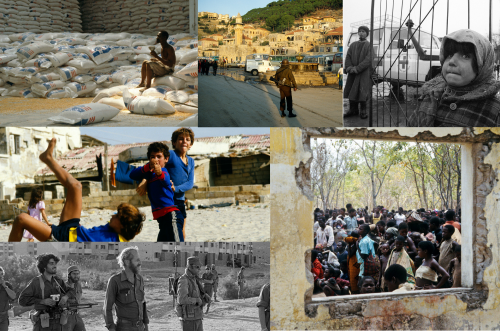


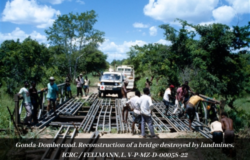
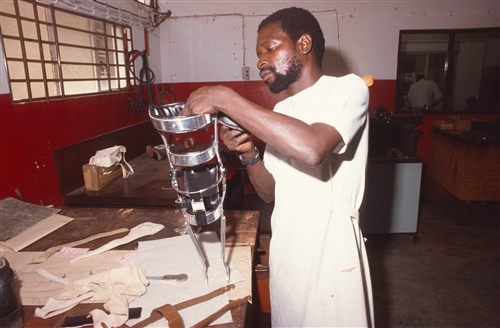
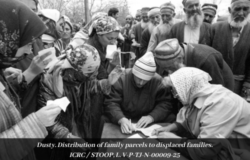


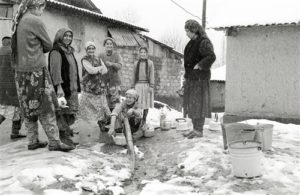
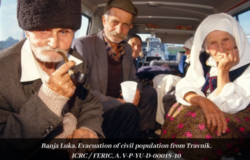
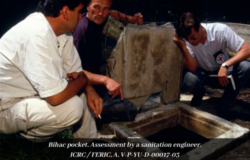
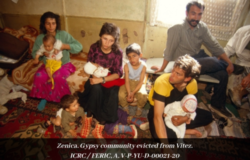
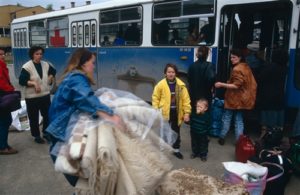




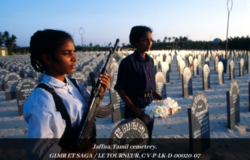
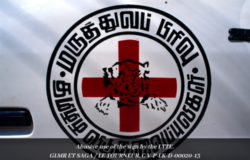

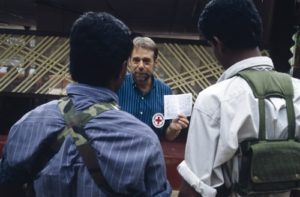

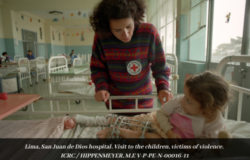
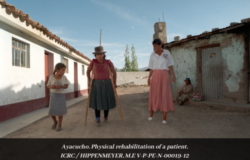



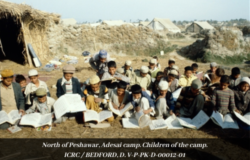




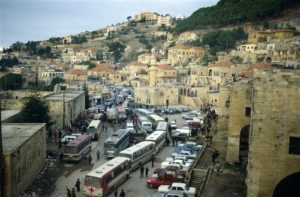


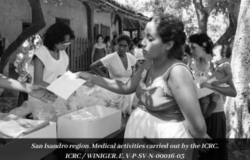




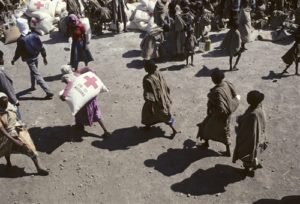
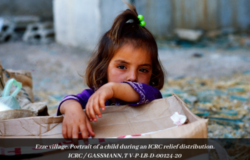
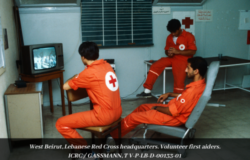
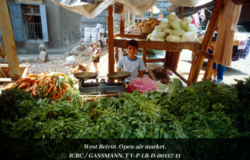


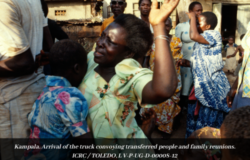

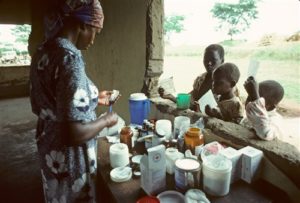








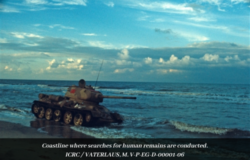
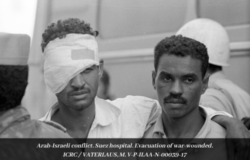
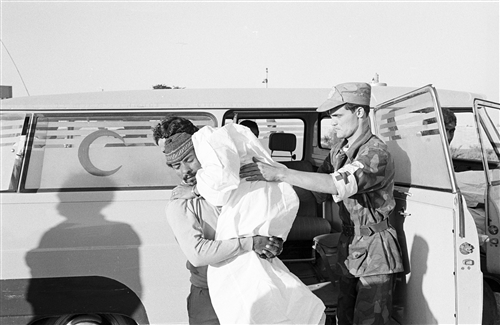
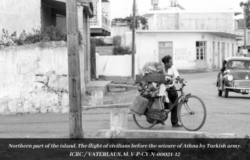
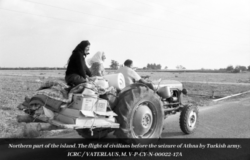
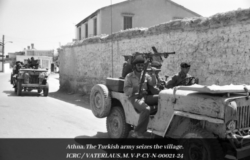

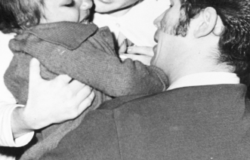
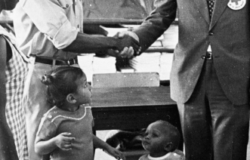

Comments